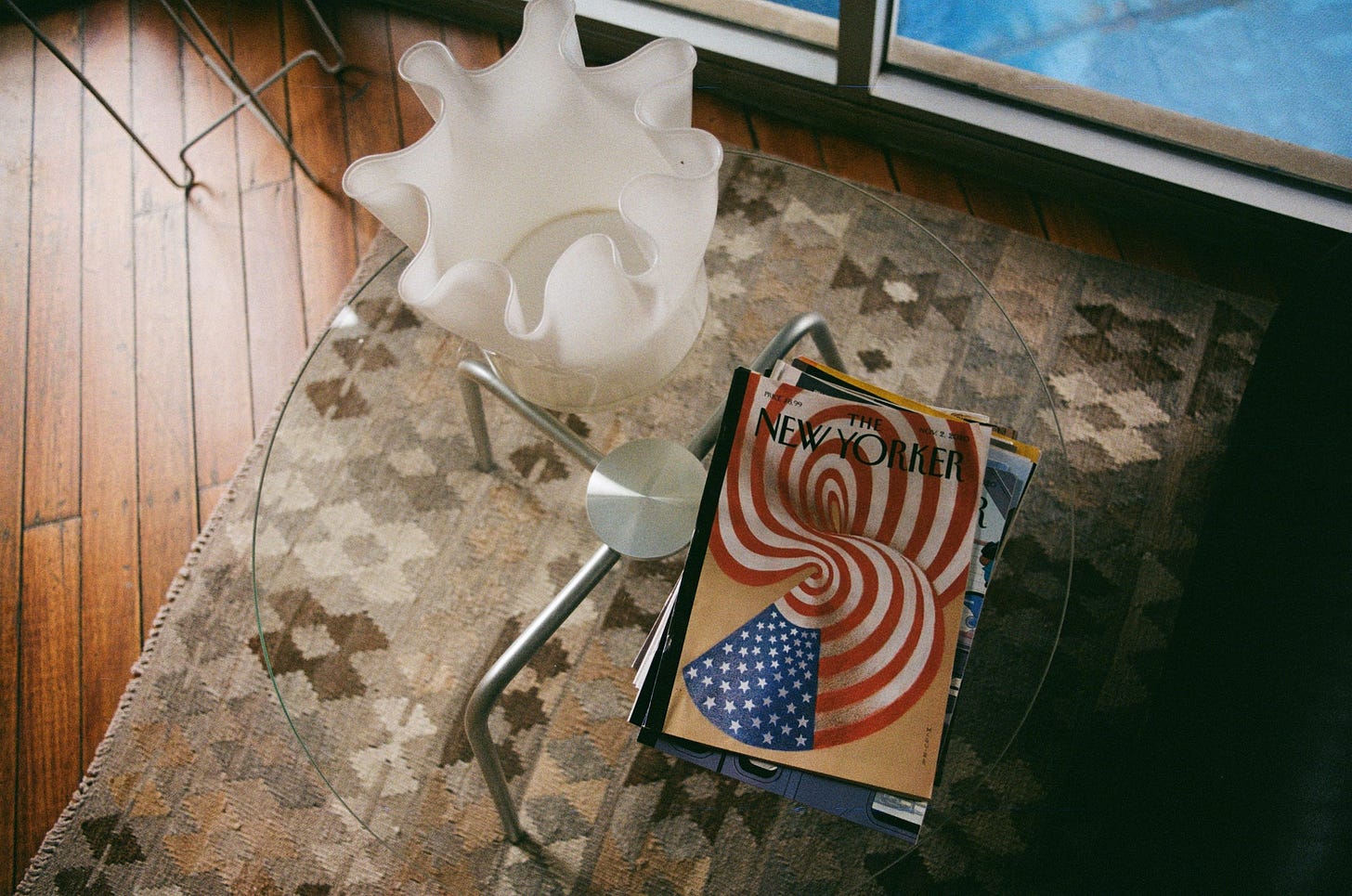Home as projection
What do all the things we surround ourselves with actually say about who we are? Part 3 of 4 in a series exploring the meaning of ‘home’.
You can read the first two in the series, What is home? and Home as memory.
Are our homes a reflection of self? Absolutely. But what about home being a projection of who we aspire to be?
Carl Jung’s concept of ‘Individuation’ encapsulates this, albeit he wasn’t speaking directly about a nice rug, or a new floor lamp. For Jung, Individuation is the search to become whole (psychologically speaking), where we consciously and unconsciously find ways to express our inner truths externally. Jung is also know for his writing on the concept of projection – the process of attributing our own unconscious feelings, thoughts, desires and fears onto other people or things. Perhaps it’s a tenuous link, but this made me think about how objects can be the carriers of meaning – where personal artefacts are an extension of our memory, identity and desire.
The idea of using our homes to project a certain version of ourselves is evidenced most acutely (in my opinion) by the fact that you can hire a book curator to fill your bookshelves with only the best literature. I guess the same could be said for art, but for some reason, I understand why you might consult an expert on art. For books, it seems unnecessary… just read what you like. Alas, we come full circle to my point – that the objects we surround ourselves with are projections of our idealised self.
What we display, what we hide, what we invest in, all of this ‘stuff’ that we live with reveals something about who we are or want to be. Even Virginia Woolf’s titular ‘room’ isn’t literal, it’s symbolic. Our homes are a container for becoming. And if we can project ourselves into that space with intention, we give ourselves the permission to change.
I often speak to designers and architects about the concept of future-proofing. Designing in a manner that allows a space to change alongside the changes that happen throughout life. A kids’ playroom that will morph into a study zone, or a detached studio to run a small business that could, at a different time, be used as a granny flat. This is just smart design. But it also alludes to the future versions and dynamics that might inhabit it. Within this adaptable, use-agnostic container, our belongings act as symbols of inner states or unconscious drives.
Our homes are a container for becoming. And if we can project ourselves into that space with intention, we give ourselves the permission to change.
Having been a design magazine editor, I’ve felt the pressure to have a home that is laden with only the best furniture, decor and art. To project the stereotype of someone at the vanguard, at times, it was incredibly stifling. The truth is, my home, like most people, is a hodgepodge of things. A rickety side table from my sharehouse days, one piece of art I bought during Covid, and a lot of books – all messily, gloriously on display.
What things are lurking in your home that encapsulate all the different sides of who you are?
Hi. Hello! Welcome. This is a space for ideas, conversations and deep dives into design, creativity and culture. It’s free to subscribe, so I hope you stick around.
I’m a design journalist – once an interior designer (for a hot second), then a magazine editor, now a podcast host, and founder of a platform for regenerative design – About Futures. I write here to explore the nuances of creative work beyond the algorithm.
I also work with select clients – find me at aleeshacallahan.com.




Hi Aleesha
Love your commentary.
I just ran an event with homeowners Ian and Ros- a creative couple aged 86 and 77 - who had us spellbound in a thought-provoking and insightful conversation that explored the evolution of their unconventional home through the lens of a creative and well-lived life. Their combined wisdoms included:
- Build your living environment around your memories - Ian’s many homes around the world are all represented in the current residence.
- Live within you means - build only what you need and add more when you have the resources.
- Don’t build for re-sale - know yourself and build for you, now, not someone else in an imagined future.
- Don’t be afraid to be different and don’t over-think - put your ideas into action and be spontaneous.
Some food for thought and a weight off the shoulders of those of us who spend too much time thinking about what could be and not enough enacting it (I speak for myself here, haha!) x